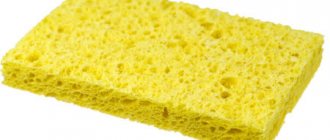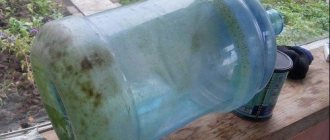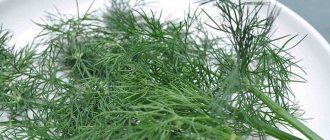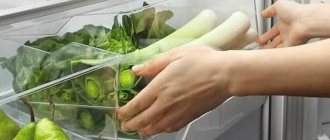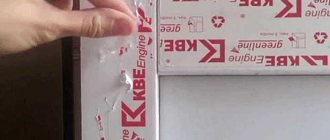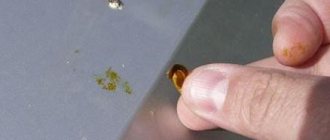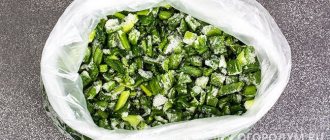How to remove greens from a bottle under the cooler, how to store water and how often should it be washed? To solve the issue of cleaning greens in a plastic bottle, I resorted to a simple technique. The green coating was removed quickly, the work was done in 10 minutes independently and at home.
In today's post I am conducting an experiment related to cleaning a bottle of greens that have accumulated during use due to lack of care. Disinfecting and removing greens from the walls of the dishes has always been in the first place if we use tap water, but here the method “will do” didn’t work. The greenery on the edges of the dishes began to scare me!
I tried to clean the green deposits from a plastic bottle, I was pleased with the result, which I wrote about in this material. I had assumed before that simple methods and tools for them were always at hand, so here, too, the ingredients for cleaning the greens inside the bottle were lying on the kitchen shelf.
How to clean the greenery inside a plastic canister if you only have improvised items and kitchen utensils at hand? This instruction will show you how to clean a canister of greens at home.
To find out what new Lifehacks appear on the blog, please subscribe to the latest notes, and now the note itself, how to wash a bottle with a narrow neck.
How to clean the inside of a bottle from green deposits
If left unused for a long time, a green coating may form on the inner walls of the bottle. You can remove dirt in 10 L, 19 L or 20 L bottles using various available means.
Ershik
A classic device for cleaning containers with a narrow neck. To prevent the inner surface from being damaged when cleaning, use a brush with natural bristles.
Cleaning with soda
A natural antiseptic that will remove dirt and green deposits from inside the bottle. Pour soda into a container and add a little water until a thick paste forms at the rate of half a pack of soda per 20 liters of water. Leave to act for 2-2.5 hours. To speed up the cleaning process, place a sponge inside and use a long stick to scrub the walls.
Salt and dishwashing gel
The salt will act as an abrasive, and the detergent will remove dirt. Coarse sea salt is suitable for this procedure. Pour the cleaning ingredients into the bottle and add water. Shake the contents thoroughly and leave to act for 30–40 minutes. Then rinse the container with clean water.
Beans
Dry beans clean the walls well of plaque and dirt. Pour the beans into the bottle and add water. Take the ingredients in the ratio of 1 cup of beans per 1 liter of water. Shake the contents thoroughly until the water turns a cloudy green color. Remove the beans from the container and rinse the inside of the container. Instead of beans, you can use any other grain.
Pipe cleaner
The method is suitable if the bottle is used only for household needs. Drinking water from such containers is strictly prohibited. Pour pipe cleaner inside and leave for half an hour. Under the influence of the substance, the plaque will come off on its own. Then drain the contents and rinse the inner walls of the container as thoroughly as possible.
Vinegar
Mix vinegar and water in equal proportions. Pour the resulting liquid into the bottle and let it brew. Vinegar will not only remove dirt, but also add shine to the surface.
Sand
Sand acts as an abrasive. The procedure will also require hot water and dishwashing liquid.
Action plan:
- Fill the container with hot water and leave to soak.
- Drain dirty water.
- Add sand mixed with dishwashing liquid.
- Shake the bottle thoroughly to remove dirt from the sides.
- Drain the sand and rinse the container with water.
If dirt remains, repeat the procedure.
Use of chemicals
After cleaning with aggressive chemicals, the dishes should never be used for drinking water. The water in it will only be suitable for technical consumption. You can clean a plastic bottle from green deposits like this:
- A five percent solution of hydrochloric acid is poured into the dishes and rinsed for a short time. The lid must be screwed on tightly. Next, pour out the solution and rinse the dishes thoroughly under running water.
- Pipe cleaner is poured or poured into the container and topped up with water. After 20-30 minutes, you can pour out the contents and wash the dishes.
These methods are also suitable for washing glassware. Unlike plastic, it can be used to store drinking water, but first you need to rinse it for a long time.
Please remember that not all plastic utensils are recyclable. It is necessary to pay attention to the instructions, composition of the material and expiration date.
Non-standard ways to clean a bottle
If classic cleaning methods do not help, you can use non-standard methods for cleaning large containers with a narrow neck.
Newspaper or cloth
To clean, you will need scrap newspaper, baking soda and water.
- First, mix baking soda and water until you get a thick paste.
- Tear the newspaper into small pieces and pour it into the bottle.
- Add the soda mixture and shake the container thoroughly.
- Leave the cleaning agent inside for a while to work.
- Shake the container again.
- Drain the remaining liquid with newspaper and rinse the bottle with running water.
You can clean the bottle with a cloth if you can get river or swamp water nearby. This is necessary so that the liquid inside the bottle blooms and contaminants are easily removed. Dilute clean swamp water, pour into a container and wait until it blooms. After this, place a piece of fabric in the container. Carefully drain the contents while straightening the fabric inside. Then pull the edge and remove the cut from the container, thereby wiping all the walls. Finally, rinse the container thoroughly with clean water.
Nettle
In field conditions, nettle leaves can be used as an abrasive.
Procedure:
- Fill the container with warm water to soak the dirt.
- Add nettle leaves inside.
- Shake thoroughly until the coating comes off.
- Drain the contents and rinse the bottle with clean water.
You can use yarrow instead of nettle.
Rice
Regular rice scrapes dirt off the walls well. To remove not only dirt, but also to disinfect the bottle, the procedure will require soda.
Procedure:
- Fill the container 1/3 full with hot water.
- Add a few handfuls of rice.
- Add 3 tbsp there. spoons of soda.
- Close the container and shake the contents thoroughly until the dirt comes off.
- At the last stage, rinse the bottle with clean water.
Baking soda and eggshells
This recipe is good because it helps to further disinfect the bottle and kill germs.
- Prepare a 5% soda solution: dissolve 50 g of baking soda in 1 liter of warm water. In total you will need approximately 5 liters. The solution should cover the most contaminated area - the bottom.
- Pour the liquid into a bottle (it’s convenient to do this through a funnel).
- Leave the stains to soak for 2 hours.
- At this time, make a cleaning powder: grind the shells of 4-5 chicken eggs (about two handfuls). Any shell will do, both raw and boiled. There is no need to grind it into flour, just roll it out with a rolling pin.
- Pour the shells into the eggplant.
- Close the lid and shake so that the liquid rotates in a circle.
- After 3-4 minutes, drain the green solution.
- Rinse the eggplant with clean water 2-3 times.
Sharp shells mechanically remove plaque without scratching the plastic. The walls become transparent again. And all this with a minimum of effort.
How to clean a glass bottle with a narrow neck from wine
Most often, such containers have a large volume, so washing them is quite difficult due to their non-standard dimensions. To avoid any difficulties during cleaning, follow certain rules:
- Fill the bottle with water, so the dirt will fall off more easily and it will be easier to clean the surface;
- it’s good if you alternate chemical methods with washing the inner surface with warm water;
- for better results, turn the container upside down (if dimensions allow), so the plaque will fall off under its own weight;
- if the unpleasant smell remains, perhaps it is not the walls that smell, but the bottle cap, try replacing it with a new one;
- Do not experiment with large pebbles as an abrasive, as they may break the container.
Important points of the process
Cleaning a wine container will go faster and won’t cause much trouble if you adhere to the following rules:
- Initially, the product must be soaked in warm water. If there is such an opportunity, then it is better not to just fill the bottle, but to place it in warm water, then the sediment will fall off faster.
- After each cleaning option (if it does not give an ideal result), the item should be dried before repeating the approach or trying something new. Alternating chemical exposure with the use of clean water and dry air will destroy even the most stubborn sediment.
- When trying to remove plaque from inside the bottle, one must not neglect the law of universal gravitation. If you turn the bottle over so that the problem area is on top, it will gradually crumble under its own weight. However, given the size of the item, this is not so easy to do.
Tip: Glass is not plastic, it practically does not retain aromas. Often the cause of an unpleasant odor that seems to be coming from the container is an old or damaged lid. You shouldn’t try to wash or disinfect it, it’s better to just replace it.
- Even though the glass used in wine bottles is very thick, it is not that difficult to break. When cleaning, do not use coarse sand, pebbles, or small stones. They really effectively break up dense sediment, but can leave scratches on the inner surface of the product, which in the future will lead to a decrease in the strength of the material.
If the bottle has not been cleaned for so long that its internal surfaces are covered with mold, then cleaning products alone will not be enough. You will have to use disinfectants or professional sterilization methods.
Simple cleaning methods
1. Place the bottle in warm water, and also pour warm water inside. In this case, the sediment will fall away faster, all that remains is to drain it. 2. If just soaking doesn't work, start adding dish soap. Alternating chemical exposure with rinsing with warm water is good for cleaning. 3. When removing plaque from the inside, you can turn the bottle over. The sediment will fall off under its own weight. But sometimes this is not entirely convenient if the glassware is huge and there is not much space.
If the bottle is braided, it is easier to turn it over when removing sediment.
By following these simple rules, you can safely begin cleaning the container. But how and how can you wash a narrow-necked bottle if regular water doesn’t do the job? What available means can you use to wash it for sure? Over the long history of making homemade wine, many ways have been invented to clean hard-to-reach containers.
Special devices for removing plaque
4. Brush. A good old and indispensable item for washing any bottles. It copes well with hard-to-reach places and narrow necks. But in the case when the bottle is 19-20 liters, you should take a brush with a long handle and a more fluffy, dense and voluminous washing part. 5. Water jet. That's also a good way. It’s good if there is a hose that fits into the neck, it can be directed towards the dirt. Under the pressure of the jet, the dirt falls away. 6. Fresh dirt can be easily washed off with dishwashing detergent. Just pour it in there and shake it well. It cleanses fresh dirt well, but most likely will not cope with old dirt. In this case, you will have to settle the mixture. 7. Cleaning up wine residues with baking soda. It will not give results on its own, but if you use the same brush, the result will appear. 8. Vinegar. An excellent method for significant stains, but it takes a lot of time. With the help of vinegar, sediment is removed very well and the container is completely disinfected. But in order for the pungent odor to disappear after such cleaning, it is necessary to ventilate the bottle for a long time. If you have it, then this method is for you. 9. Sand. Some people pour sand baked into a baking tray and pour water into it, shaking the bottle well. As a result, the precipitate disappears. The main thing is that the sand is fine and does not destroy the crystal surface of the bottle.
Simple but effective methods
In cases where the contamination is very fresh or is not excessively dense, you can try cleaning a container with a narrow neck using one of the following methods:
- Ershik. It is clear that this can only be a special device with a very long handle and fluffy dense pile. It passes through the neck of the product without any problems and allows you to wipe off even the most stubborn stains.
- Jet pressure. If you have a watering hose at your disposal, then by adjusting the intensity of the water supply you can again thoroughly clean the insides of the bottle.
- Detergents. Fresh stains can be easily washed off with the most common dishwashing detergents. The main thing is not just to pour the product into the container, but also to shake it thoroughly so that the effect affects all dirty areas.
- Soda. Simply pouring baking soda into a bottle of water will have virtually no effect. The composition will slightly soften the sediment, but will not get rid of it completely. This approach must be combined with mechanical action, for example, working with a brush or sponge on a holder.
- Vinegar. This product will not only dissolve sediment, plaque or scale, making it easier to remove, but will also disinfect the container. True, you need to resort to this approach only if time is not pressing and the product can be aired in the fresh air for a long time after cleaning, otherwise traces of a pungent odor will remain for some time.
- Fine sand. First, pour in fine sand, calcined on a baking sheet, then pour in water. If you vigorously shake the container, it will clean itself perfectly. The main thing is to make sure after this that all the sand has been washed away.
Some owners try to clean the bottle with buckwheat, but in practice this method is not as good as it seems. The food component softens under the influence of moisture, causing its particles to peel off and stick to the glass. They can be almost invisible until they begin to rot and spoil the taste and aroma of the drink stored in the container.
Take advantage of the secret remedy
Surprisingly, many simple products can be used for unusual purposes.
In our case we are talking about ordinary rice. It can be used to perfectly clean the narrow neck of any glass bottle, just follow a few simple steps:
- Step one - pour hot water into the bottle, filling it about a third of the way.
- Step two - pour a handful of rice inside.
- Step Three – Add two teaspoons of baking soda to the mixture.
- Step four - cork the bottle. If you lose the lid, you can simply plug the neck with your hand.
- Step five - shake the bottle vigorously for a couple of minutes.
- Step five - empty the bottle of its contents and rinse it well in hot water.
As a result, your bottle will be crystal clean, as the rice will carefully remove food residues from its walls. The soda, in turn, will disinfect the dishes and remove the smell.
This method is very easy to implement. It will not require much expense, effort or time from you. In addition, you can feel like a real bartender preparing an original cocktail for a guest.
Non-standard methods
In addition to the above popular ways to wash containers, there are also non-standard ones.
You can clean it with newspaper or cloth. The newspaper is torn into small pieces, thrown inside, filling about a quarter of the space, then water is poured. Wait for the paper to swell with liquid. Now you need to rotate and shake the bottle, trying to clean all areas of contamination. With fabric it's a little different. First, they collect water, and clean water is diluted with a liter of river or swamp water. After this, they wait until the liquid blooms, and then they insert a piece of fabric inside . They begin to drain the water, constantly straightening the piece of fabric along the walls. After this, gently pull the tip of the material. It turns out that she wipes all the walls. All that remains is to rinse thoroughly several times with clean water.
How to clean a glass bottle from vegetable oil
Oil does not interact well with water, so for cleaning, choose substances that dissolve fatty compounds well.
Mustard
For the procedure you will need mustard powder and warm water.
Procedure:
- Dilute mustard in water at the rate of 2 tbsp. spoons of powder per 1 liter of liquid.
- Mix the mixture thoroughly so that there are no lumps.
- Pour the substance into the bottle and leave for 2-3 hours.
- Drain the detergent and rinse the container with running water.
If you do not achieve the desired result, repeat the procedure.
Flour
Flour absorbs liquid well, so it will perfectly clean the inner walls of the container. You will also need a handful of rice for the procedure.
Progress:
- Fill the bottle with water.
- Add flour to obtain a white liquid.
- Soak the container upside down for 1-2 hours.
- Add rice to the mixture.
- Shake thoroughly and drain the contents.
- Rinse the container with clean water.
Boiling
The method is suitable if you have a pan of suitable size in your arsenal. The advantage of this method is that you can immediately clean as many containers as will fit in the pan. Place containers in it and fill it to the top with water. Add a little laundry soap or dishwashing liquid. Place the pan on the stove and simmer the bottles for half an hour. Cool the container and then rinse with clean water.
Millet
The method of cleaning eggplants with millet is one of the most popular. Hard grits act as an abrasive.
To remove greens:
- Pour 1-2 liters of cold water into the eggplant. The less liquid, the faster the cleaning will occur.
- Pour a glass of millet inside through a funnel (or paper).
- Stir the contents in a circular motion until the sides are clean.
We recommend: Effective savings: choosing and installing an aerator on the faucet in the bathroom and kitchen
If you don't have millet, you can use rice, peas, and beans.
A clear example of how to clean the inside of a 19-liter water bottle:
Features of cleaning a cooler bottle
It is important to understand that you need to clean not only the bottle, but also all parts of the cooler that come into contact with water. Read this entire article on how to clean a water cooler.
If only the water container needs washing, you can clean it using:
- citric acid;
- soda;
- vinegar;
- salt with dish gel.
The cleaning process is no different from the procedure for washing glass and other containers. The main thing is to rinse the container thoroughly and be sure to dry it completely. If there is heavy contamination, first fill the bottle with warm water.
We wash the outside of the container
- Do everything by hand. Do not put old bottles and decanters in the dishwasher. High temperatures and vibration can cause the neck to crack and split.
- If you are convinced of the durability of the products you are using, you can put them in the dishwasher on the savory cycle.
Be sure to use a pill of good dishwashing detergent. - Rinse an antique container made of cut glass or crystal in a plastic basin so as not to break it. If you don’t have one, place a rubber mat or fluffy towel on the bottom of the iron sink.
- For high-quality cleaning, use a sponge and warm water with non-aggressive dish soap.
We recommend: How to clean a geyser: methods available for independent implementation
Removing unpleasant odor from a bottle
If after use the bottle emits an unpleasant odor, pay special attention to its destruction, since it cannot be destroyed by ordinary means.
Freshly ground coffee removes unpleasant odors well. Pour the fragrant powder into a container and leave for 2-3 days. After this time, even the most unpleasant smell will disappear.
If you don't have time, try removing the smell with citrus juice. Freshly squeezed lemon, orange or grapefruit juice will do. Fill the container with water and diluted juice at the rate of 1 liter of water per 150–200 ml of juice. Let the mixture sit for 8-9 hours and then wash the container with dishwashing liquid. Repeat the procedure if necessary.
With the help of nettles
It sounds implausible, but the principle of operation is the same as with cereal and newspaper. To implement this method, you need to pick 2-3 large nettle stems and chop them coarsely. The top with leaves can be thrown away.
The stem needs to be pushed into the bottle and 1 liter of cold water added, then shake the container well until clean.
It is important to know that nettles cannot be used to clean hard-to-reach places, such as the handle of a plastic container, since there is a risk that the nettle will remain in the handle.
How to dry properly
To prevent mold from appearing inside the bottle, dry it well before storing. There are several drying methods depending on the container material.
Glass
For drying, paper that absorbs moisture well or waffle towels is suitable. Roll a napkin or sheet of paper into a tube and place it in a container so that one end sticks out of the neck. Replace wet sheets with dry ones until the moisture completely disappears.
Plastic
Turn the container upside down and place it so that air enters the neck.
How to remove a label
The bottle will not look very aesthetically pleasing if you wash it only from the inside. The outer surface also needs cleaning. Especially if there is an old label stuck on it.
You can quickly remove the label using special products designed to dissolve adhesives. These include: Promega label, Label Off, KUDO.
If such a substance is not found, simply place the container under running hot water. Under the influence of heat, the glue will soften and be easily removed from the surface.
How to disinfect a large bottle
For long-term storage of wine or beer, the bottles must be sterilized before capping. If the containers are small, just hold them over steam or bake them in the oven. If the bottle is large, try one of the following:
- pour boiling water over the inner walls;
- order specialized steam cleaning;
- buy a disinfectant (pyrosulfite or metabiflite), dilute the drug in water according to the instructions and rinse the containers.
Please note that cork and other utensils that will come into contact with the future wine also need to be sterilized.
You can clean the surface of the bottle from plaque and dirt in several ways using household chemicals or improvised substances. When choosing the appropriate method, consider what material the container is made of. In addition, choose those ingredients that will definitely not spoil the inner surface of the container.
Where does the water come from?
Basically, of course, I buy water from vending machines for 4 rubles a liter of water, next to the house in the neighboring yard. Who else doesn’t know, throughout the city of Kazan, everywhere, combining several courtyards, there are automated devices for independently collecting clean drinking water.
Just like in a terminal, you top up your balance based on the number of liters of the container you want to fill, press the fill button, insert the bottle and then water automatically pours out, filling the required amount of water into the container. Today I buy a 19 liter bottle for 76 rubles.
In principle, physical exercise for the body is close to home, but due to the long absence of washing, it turns out that such everyday tasks appear. So, we resolved the issue of cleaning mold inside plastic containers and recommended it to our friends, who, in turn, cleaned their own glass containers.
This method also works well for glass containers. Removes green deposits, wine residues, dirt, much worse than in plastic bottles, where you can’t get through with a brush. Only a good shake with the grains inside the container provided a way out of this situation.
I would like to conclude my note on cleaning the bottle from green deposits. Enjoy using this method of cleaning containers and not just plastic ones. Relatively safe to clean, especially for food bottles, it's also cheap. I think you can leave millet as a reserve if you don’t eat it or rice, although we love it in the family, we make pilaf from it.

